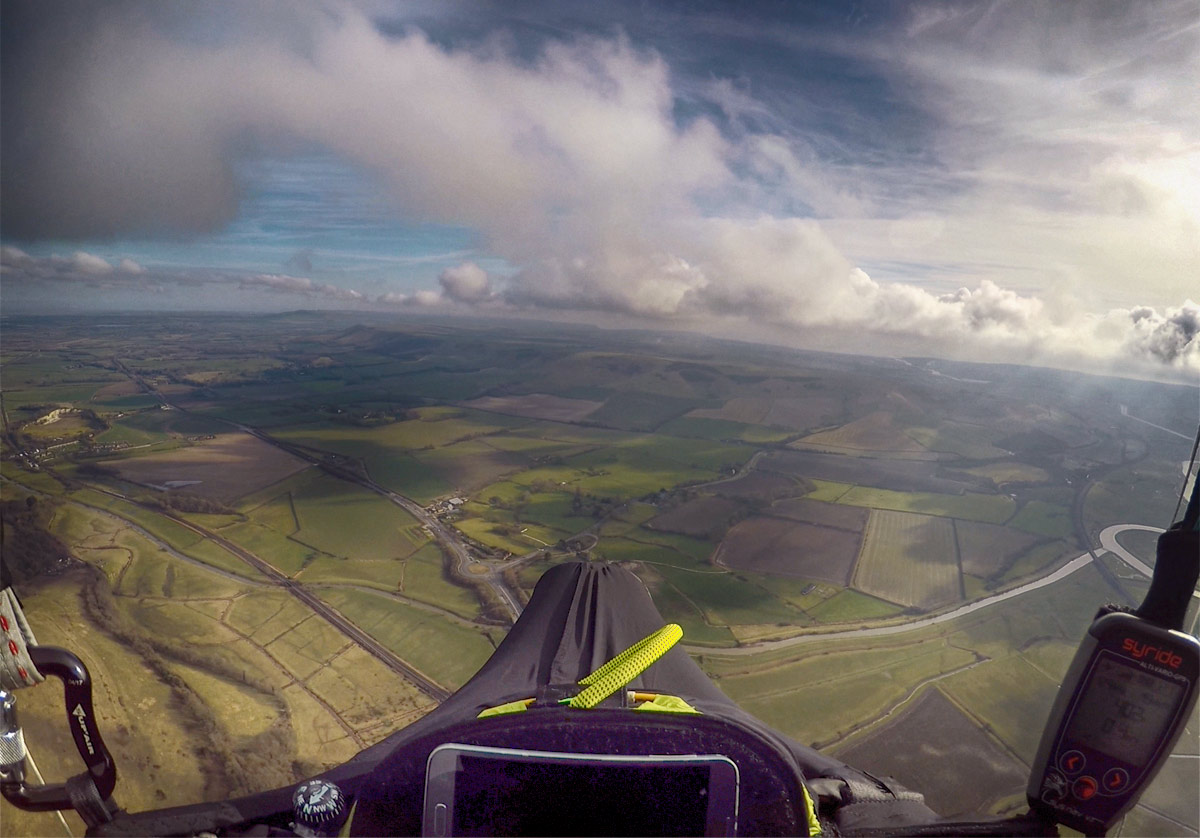
Sometimes conditions can be very punchy. This might be because the wind is not really blowing directly onto the hill, causing turbulence, or perhaps it’s early in the day and the thermals are small and narrow. Making the most of these conditions can be tricky, so in this article we examine the techniques you can apply to climb to the top using these small broken thermals.
1. Keep your turns flat
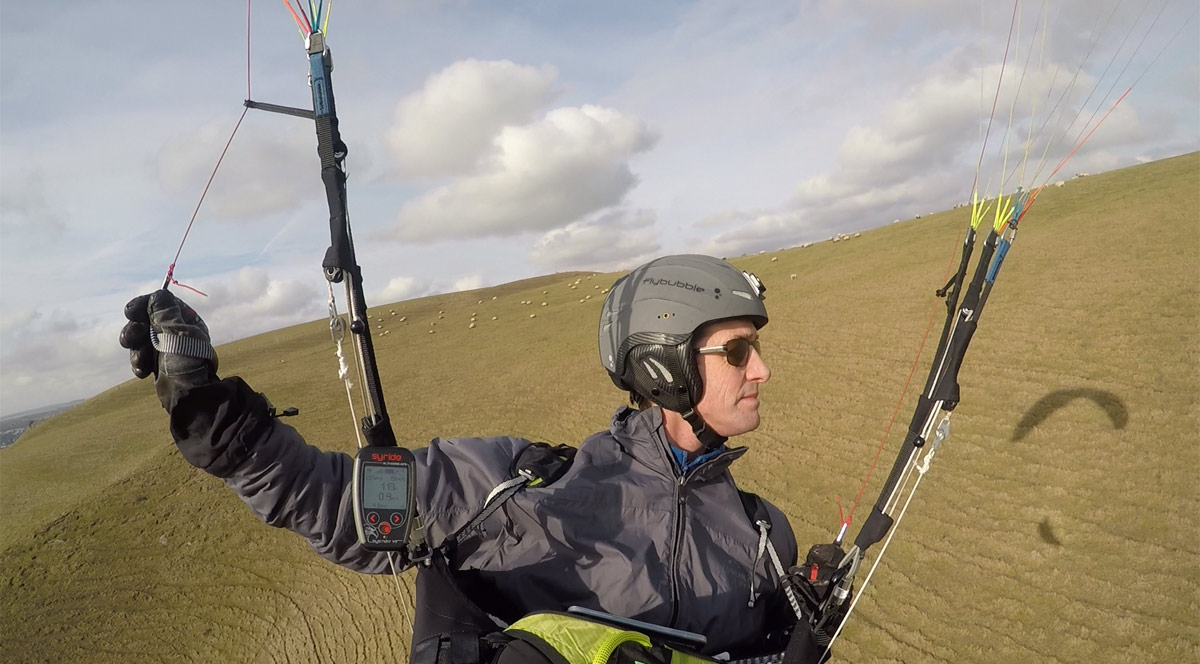
When you bank too hard, your inner wingtip approaches the horizon and you start to lose height fast. So use the outside brake to dampen out the corners, to stop them tipping in.
2. Keep your turns tight
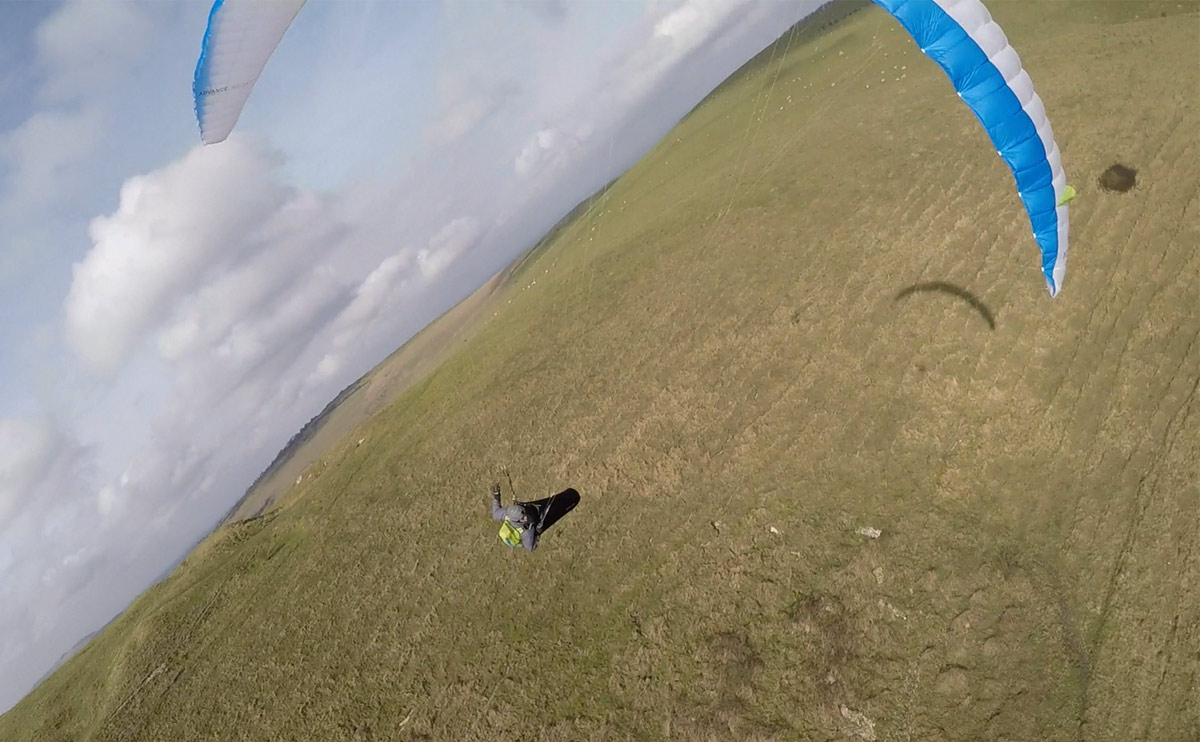
Always try to turn tighter on the stronger lift, because turning in sink is guaranteed to put you on the ground soon. The secret is to react fast to the lift, turn as soon as you hear the vario chirping, because it usually has a delay built in to it, and your wing has a response delay … even your hand has a delay. Use a little weight-shift first to improve your cornering.
3. Abandon sinky turns
If the lift disappears before 90 degrees, abandon the turn. If you got 180 degrees of turn in lift before it disappeared, then continue the full turn before shifting your circle upwind a bit.
4. Move upwind
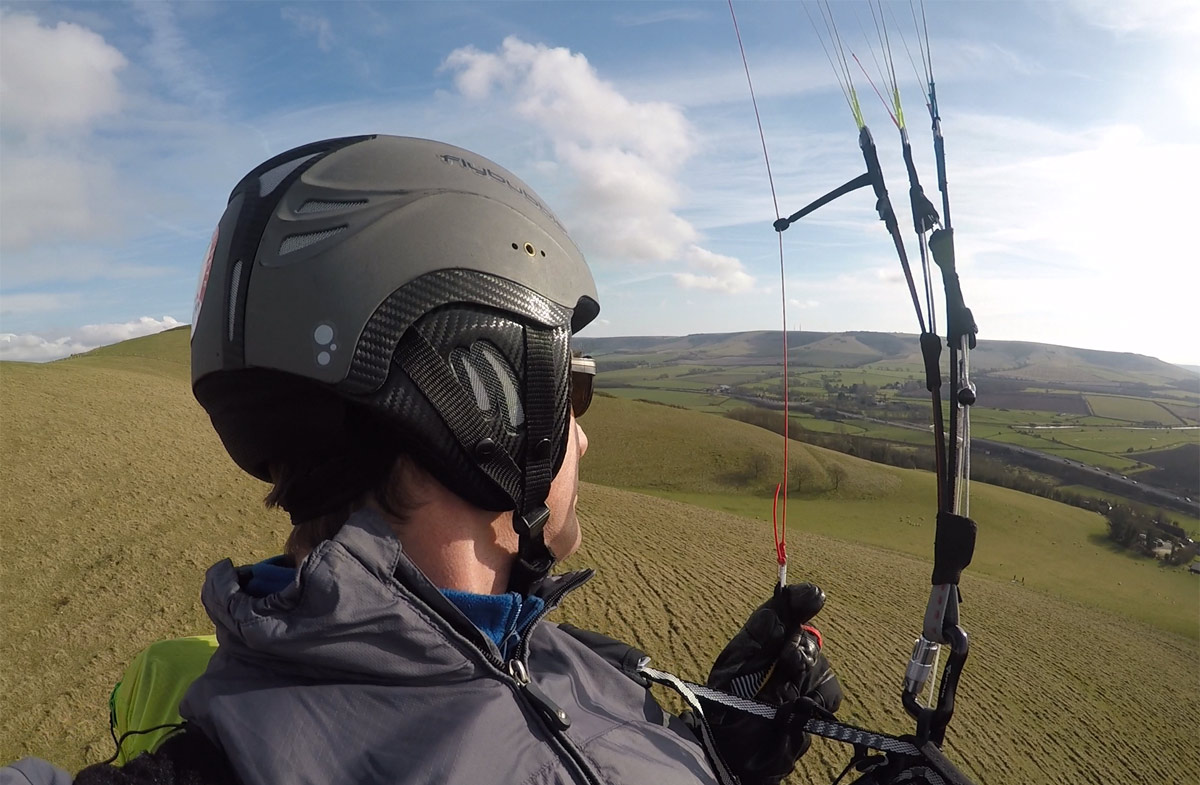
If you’ve got a big hill or mountain slope, it is likely to be your best source of lift, so soar up the windward faces to the top. It’s dangerous to drift over the crest of the hill without lots of height. The venturi effect at the crest will also increase the tilt on the thermals there, meaning you drift faster. So try and work your way upwind from there, so that you can use the thermals out in front of the slope that have less drift on them.
5. Follow the lift lines
Go straight upwind from the last lift you encountered. Many of the little cores that come through are releasing from the same thermal source, so don't lose that line. Try to judge the wind direction. You’re pointing into wind when your groundspeed is slowest. Some varios have a wind indicator.
As you're going upwind you're likely to strike stronger cores because they'll go more vertically from the same source, so your climbs should be improving. If you encounter a wide patch of calm sinking air, you've probably gone out the front and should abandon the push upwind.
6. Search in loops
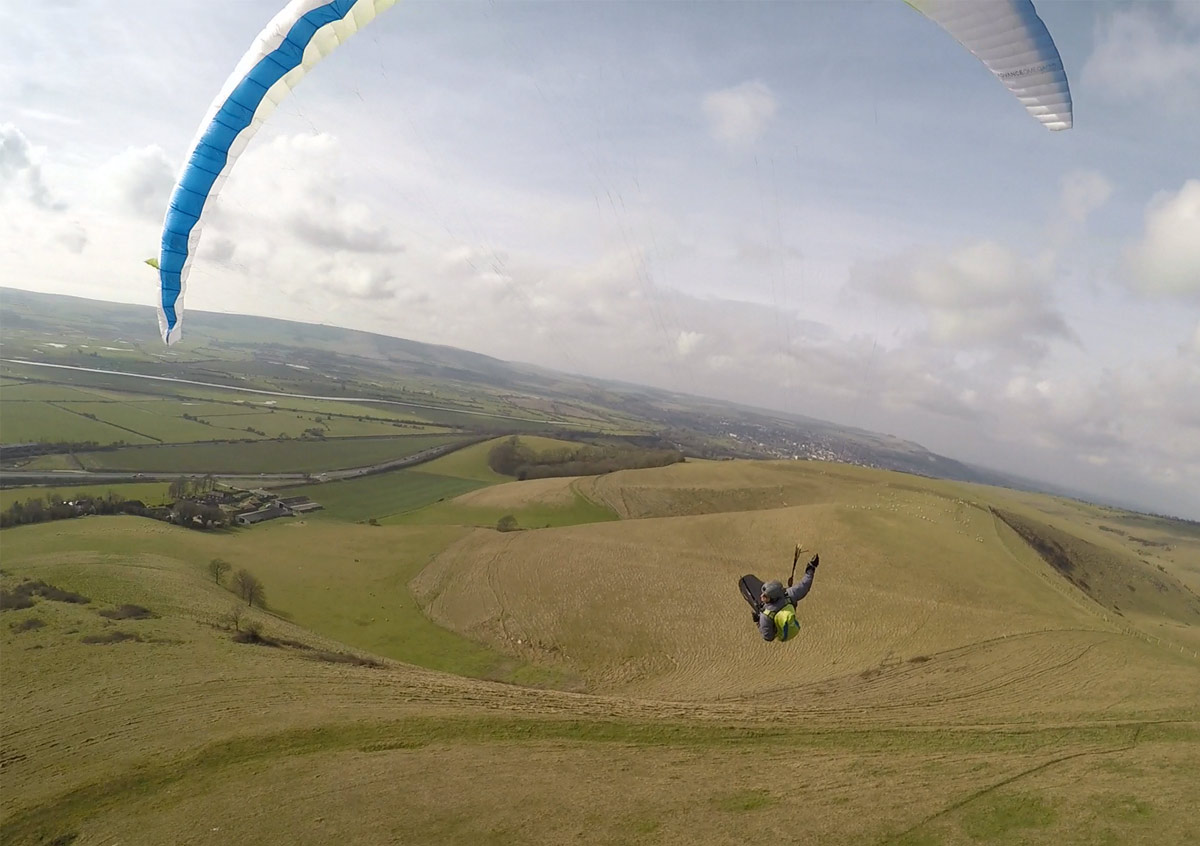
If you lose a climb, first try shifting the circle towards the direction where you encountered the strongest lift. Then search for it by widening you circle. Finally return to the original ‘upwind’ line you were following, in the hope of intersecting another core.
7. Ignore the gusts
In punchy conditions you’ll get many gusts, but if you turn on them they will let you down. But the vario is beeping! How can you tell it is a gust, not a thermal? It’s to do with your wing’s airspeed. If your speed is increasing in the lift, it's a thermal; if your speed is decreasing with the lift, it's a gust.
You want to have a feeling that the wing is pulling forward slightly, it's accelerating. That's the feeling of the thermal drawing you in. If it just knocks you back, you feel like you've been hit in the face, that's a gust. The wind strikes your glider and gives you the impression of 'lift' because you're swinging.
8. Feel the wing
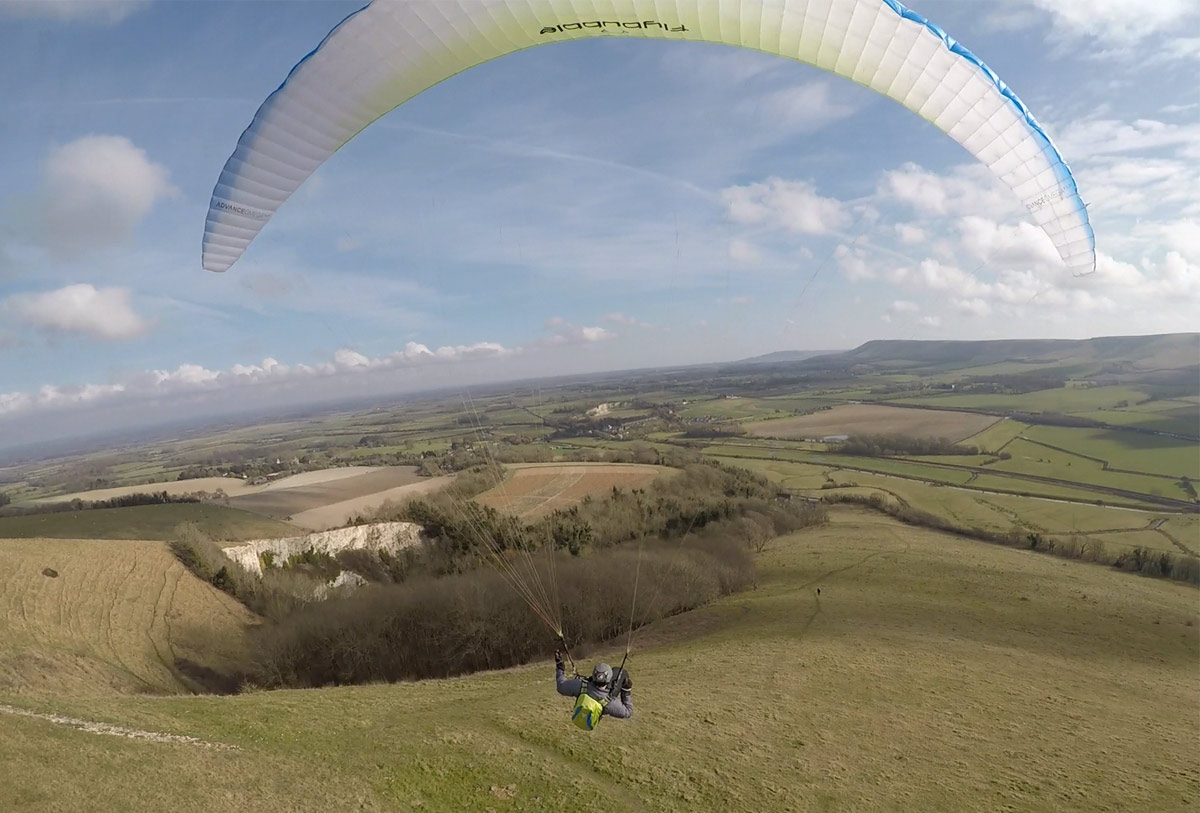
Try to sense what the air is doing ahead of your leading edge. Some wings offer more feedback and so have an advantage in sniffing out small broken thermals. Most wings lose feedback when accelerated using the speedbar, or when flown on deep brakes. Somewhere close to your trim speed is usually best, with a wide chest strap setting to minimise the dampening effect of the harness stability. This skill takes a lot of airtime, but if you try your best you will begin to develop the sensitivity needed.
9. Use your averager
In small broken thermals, the averager function on your vario is essential. The beeps and chirps usually just confirm what you have already felt through your seat, but the average lift over the last 10-15 seconds will tell you if it’s worth continuing the fight with a grumpy core. Set your averager to at least 10 seconds, you want at least a half circle to give you a meaningful reading that will remove the spikes from the equation.
10. Go crosswind on the return path
When you reach the limit of your search ahead of the hill, it’s likely you’ve just flown through an area of sink (until you gave up), so running back to the hill will put you through this bad air again. Rather divert crosswind (letting the wind drift you back to the hill at the same time). This means you get out of the sink, and have a chance to intersect another ‘thermal lift line’.
Summary: getting the best out of broken lift
Keep your turns flat, and tight. Abandon sinky turns early, and push upwind from the last lift. Ignore the gusts and try to feel what the wing is doing. And rely on your vario averager to identify good areas to work. Have fun joining the dots.
Want to see more? There's no better way to support our efforts than buying from us. We'll ensure you get great service! Choose from our huge range AND enable us to produce more videos and articles to benefit the freeflight community.

